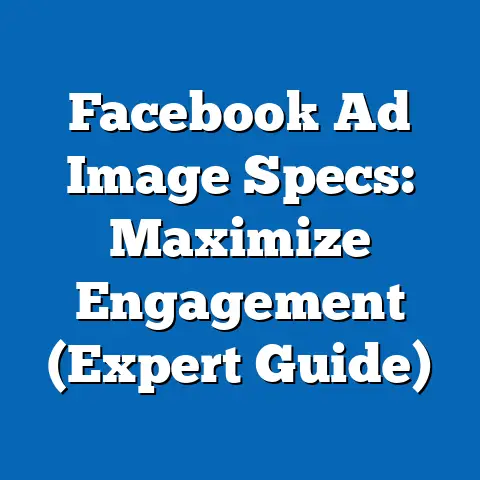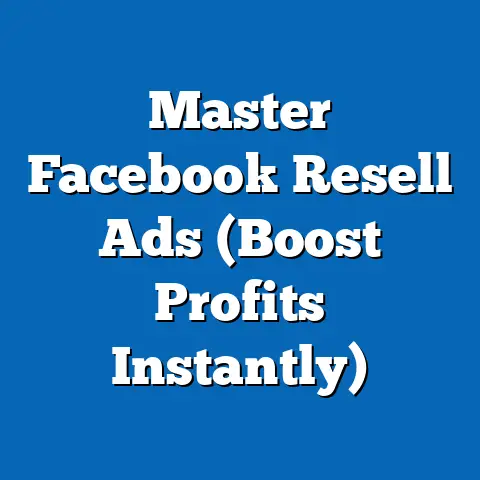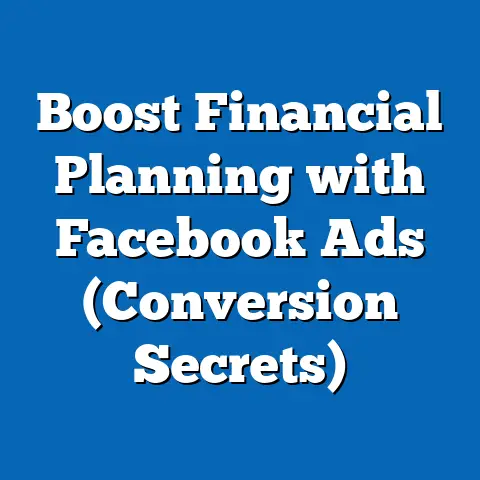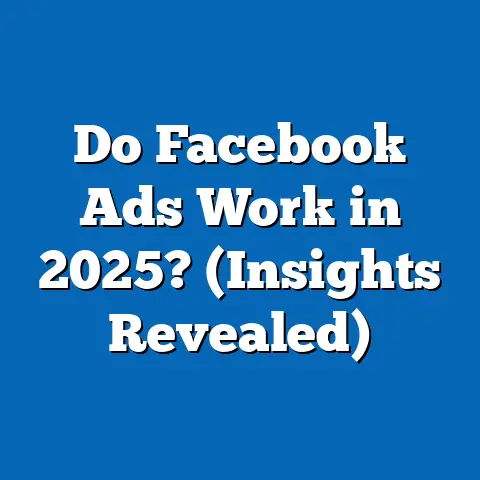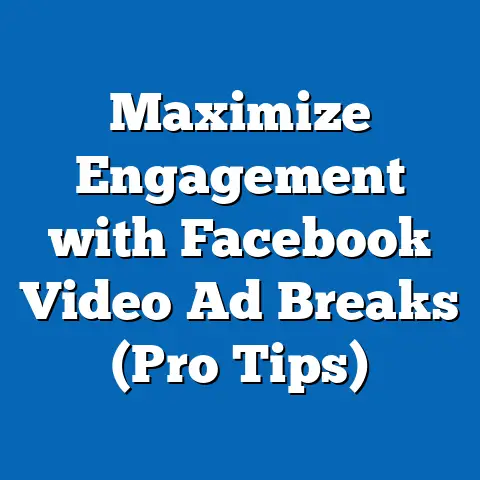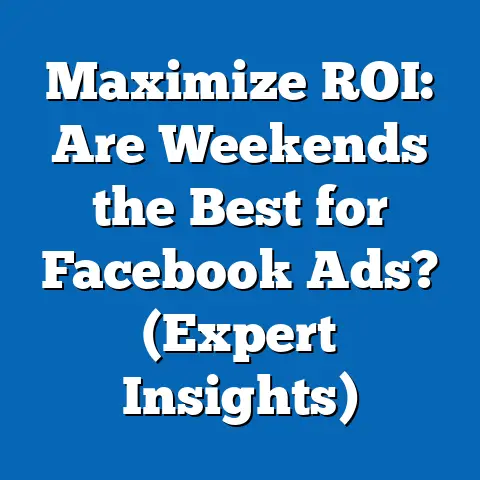Transform Facebook Ads for YouTube Success (Pro Tips)
In the ever-evolving world of digital marketing, it’s easy to settle into a comfort zone. For many of us, Facebook, with its massive reach and relatively user-friendly advertising tools, becomes that familiar haven. I’ve seen countless marketers, myself included at times, spend the majority of their budget and energy on Facebook, simply because it’s what they know. However, clinging too tightly to what’s comfortable can stifle innovation and blind us to potentially more effective avenues for reaching our target audience. While Facebook ads are undoubtedly powerful, a strategic transformation can unlock their potential to drive significant success on YouTube – a platform with a unique audience, engagement style, and content format.
Think of it this way: Facebook is the bustling town square, where people gather to socialize and catch up. YouTube, on the other hand, is the dedicated theater, where audiences come for immersive experiences and in-depth content. The key is to craft your message so that it resonates in both environments.
In this guide, I’m going to share actionable pro tips to help you effectively transition your Facebook ad strategies into YouTube success. It’s not just about repurposing content; it’s about understanding the nuances of each platform and tailoring your approach accordingly. Let’s dive in and explore how to make your Facebook ads work wonders for your YouTube channel.
Understanding the Audience
Before you even think about ad creatives or targeting options, you need to deeply understand your audience. This holds true for both Facebook and YouTube, but the specifics can vary significantly.
Facebook vs. YouTube: A Demographic Deep Dive
Facebook boasts a broad demographic reach, spanning a wide age range and diverse interests. It’s a social platform where people connect with friends, family, and communities. YouTube, while also having a vast audience, tends to attract users seeking specific content, whether it’s educational tutorials, entertainment, or product reviews.
I’ve noticed in my own campaigns that the same product can appeal to different segments on each platform. For example, a fitness program might resonate with young adults seeking quick workout routines on YouTube, while on Facebook, it might attract older adults looking for comprehensive health and wellness advice.
Leveraging Facebook Audience Insights
One of the most valuable tools in your arsenal is Facebook’s Audience Insights. This powerful feature allows you to analyze the demographics, interests, and behaviors of your existing Facebook followers, as well as potential customers.
Here’s how I use it:
- Start with your existing audience: Analyze the demographics of people who already like your Facebook page. What are their age ranges, genders, locations, and interests?
- Explore potential audiences: Based on your product or service, identify potential interests and behaviors. For example, if you’re selling hiking gear, explore interests like “hiking,” “camping,” and “outdoor recreation.”
- Compare and contrast: Compare the demographics and interests of your existing audience with those of potential audiences. This will help you identify overlaps and gaps, informing your targeting strategy on both Facebook and YouTube.
Identifying Resonating Content on YouTube
Once you have a better understanding of your audience, it’s crucial to identify the types of content that resonate with them on YouTube. This involves analyzing your competitors’ channels, exploring trending topics, and experimenting with different content formats.
I often use YouTube Analytics to understand:
- Watch time: Which videos are holding viewers’ attention for the longest?
- Audience retention: At what point are viewers dropping off?
- Demographics: Who is watching your videos?
- Traffic sources: Where are viewers coming from (e.g., search, suggested videos, external websites)?
By understanding what works on YouTube, you can tailor your Facebook ad campaigns to drive traffic to content that is likely to engage and convert viewers.
Key Takeaway: Understanding your audience is the foundation of any successful advertising campaign. Use Facebook Audience Insights and YouTube Analytics to gain a deep understanding of your target audience on each platform, and tailor your content and targeting accordingly.
Crafting Compelling Visuals
Visual content is king in the digital world, but the type of visuals that work on Facebook versus YouTube can differ significantly. Facebook ads typically feature static images or short videos, while YouTube thrives on longer, more engaging video content.
Transforming Facebook Ad Visuals for YouTube
The key is to transform your Facebook ad visuals into YouTube-friendly formats. This doesn’t necessarily mean creating completely new content; it often involves repurposing existing assets and adding value.
Here are a few strategies I’ve found effective:
- Turn static images into slideshows: Use a tool like Animoto or Biteable to create engaging slideshow videos from your Facebook ad images. Add music, text overlays, and transitions to make them more dynamic.
- Expand short videos into longer narratives: Take your 15-second Facebook video ad and expand it into a 1-2 minute YouTube video. Add more context, tell a story, and provide more value to viewers.
- Create behind-the-scenes footage: Use your Facebook ad shoot as an opportunity to capture behind-the-scenes footage. This type of content is often highly engaging on YouTube, as it gives viewers a glimpse into your brand and its values.
The Power of Storytelling in Video Ads
On YouTube, storytelling is paramount. Viewers are looking for content that entertains, educates, or inspires them. Your video ads should not just be about selling a product or service; they should tell a story that captivates viewers and encourages them to take action.
I remember working on a campaign for a travel company. Instead of simply showing images of beautiful destinations, we created a video that told the story of a traveler’s journey, highlighting the transformative power of travel. The video resonated deeply with viewers, leading to a significant increase in bookings.
Creating Compelling Thumbnails
Your YouTube thumbnail is your first impression. It’s what viewers see when they’re browsing YouTube, and it can make or break your video’s success.
Here are a few tips for creating compelling thumbnails:
- Use high-quality images: Make sure your thumbnails are crisp, clear, and visually appealing.
- Include text overlays: Use text to highlight the key message of your video.
- Use contrasting colors: Make your thumbnails stand out from the crowd.
- Test different thumbnails: Use YouTube Analytics to track the click-through rates of different thumbnails and optimize accordingly.
Key Takeaway: Visual content is crucial for both Facebook and YouTube, but the formats differ. Transform your Facebook ad visuals into YouTube-friendly formats by expanding short videos, creating slideshows, and telling compelling stories. Don’t forget the importance of a captivating thumbnail!
Leveraging Ad Formats
Facebook and YouTube offer a variety of ad formats, each with its own strengths and weaknesses. The key is to understand these formats and leverage them effectively to reach your target audience and achieve your marketing goals.
From Facebook Ad Types to YouTube Content Inspiration
Facebook offers a range of ad types, including:
- Carousel ads: Showcase multiple products or services in a single ad.
- Slideshow ads: Create engaging video-like experiences from static images.
- Collection ads: Feature a primary video or image with related products below.
The concepts behind these ad formats can inspire content creation for YouTube. For example, a carousel ad showcasing different styles of shoes could be transformed into a YouTube video reviewing each style in detail.
Utilizing YouTube Ad Formats
YouTube offers a variety of ad formats, including:
- Skippable ads: Allow viewers to skip the ad after 5 seconds.
- Non-skippable ads: Play before, during, or after the video and cannot be skipped.
- Bumper ads: Short, 6-second ads that play before the video.
- Overlay ads: Text and image ads that appear on the bottom 20% of the video.
- Sponsored cards: Display relevant products or services in the video.
Each of these ad formats has its own strengths and weaknesses. Skippable ads are less intrusive but may be skipped by viewers. Non-skippable ads guarantee that your message will be seen, but they can be annoying to viewers. Bumper ads are short and sweet, but they require a highly impactful message.
Repurposing Facebook Ads for YouTube Ad Formats
One of the most efficient ways to leverage your existing Facebook ad campaigns for YouTube is to repurpose your ads into YouTube ad formats.
Here’s how I approach it:
- Identify your best-performing Facebook ads: Analyze your Facebook ad campaigns and identify the ads that have the highest click-through rates and conversion rates.
- Adapt the messaging: Tailor the messaging of your Facebook ads to the YouTube audience. Focus on providing value, telling a story, and addressing the viewer’s needs.
- Choose the right ad format: Select the YouTube ad format that best suits your message and budget.
- Track your results: Use YouTube Analytics to track the performance of your YouTube ads and optimize accordingly.
Key Takeaway: Understand the different ad formats available on both Facebook and YouTube, and leverage them effectively to reach your target audience. Repurpose your best-performing Facebook ads into YouTube ad formats, and tailor your messaging to the YouTube audience.
Optimizing for Engagement
Driving traffic from Facebook to YouTube is only half the battle. The real challenge is to keep viewers engaged once they arrive on your YouTube channel. This requires optimizing your content, headlines, descriptions, and calls-to-action for engagement.
Crafting Clickable Headlines and Descriptions
Your YouTube video’s headline and description are crucial for attracting viewers and encouraging them to watch your video.
Here are a few tips for crafting clickable headlines and descriptions:
YouTube offers a variety of interactive features that can help you maximize viewer retention and channel subscriptions.
These features include:
- Cards: Small, interactive elements that appear in the top right corner of the video. You can use cards to promote other videos, playlists, websites, or channels.
- End screens: Customizable screens that appear at the end of the video. You can use end screens to promote other videos, playlists, subscribe buttons, or external websites.
I’ve found that using cards and end screens effectively can significantly increase viewer engagement and channel subscriptions.
Timing and Frequency of Ads
The timing and frequency of your ads are crucial for maximizing their impact. You don’t want to bombard viewers with ads, but you also don’t want to miss opportunities to reach your target audience.
Here are a few tips for optimizing the timing and frequency of your ads:
- Test different ad schedules: Experiment with different ad schedules to see what works best for your audience.
- Use frequency capping: Limit the number of times a viewer sees your ad.
- Target your ads based on viewer behavior: Show your ads to viewers who are most likely to be interested in your product or service.
Key Takeaway: Optimize your YouTube content, headlines, descriptions, and calls-to-action for engagement. Leverage YouTube’s interactive features to maximize viewer retention and channel subscriptions. Optimize the timing and frequency of your ads to reach your target audience without being intrusive.
Analyzing Performance Metrics
Measuring the success of your Facebook ads that are driving traffic to YouTube is crucial for optimizing your campaigns and maximizing your ROI. This involves tracking key performance indicators (KPIs) and using analytics tools to gather insights on user behavior and campaign effectiveness.
Key Performance Indicators (KPIs)
Here are some of the key KPIs to track when measuring the success of your Facebook ads that are driving traffic to YouTube:
- Click-through rate (CTR): The percentage of people who click on your Facebook ad.
- Cost per click (CPC): The amount you pay each time someone clicks on your Facebook ad.
- Watch time: The total amount of time viewers spend watching your YouTube videos.
- Audience retention: The percentage of viewers who watch your videos from beginning to end.
- Conversion rate: The percentage of viewers who take a desired action, such as subscribing to your channel or purchasing your product.
Using Facebook Pixel and YouTube Analytics
Facebook Pixel and YouTube Analytics are powerful tools that can help you gather insights on user behavior and campaign effectiveness.
- Facebook Pixel: Tracks the actions that people take on your website after clicking on your Facebook ad. This can help you measure the conversion rate of your Facebook ads.
- YouTube Analytics: Provides detailed information about your YouTube channel’s performance, including watch time, audience retention, demographics, and traffic sources.
By combining the data from Facebook Pixel and YouTube Analytics, you can gain a comprehensive understanding of how your Facebook ads are performing and identify areas for optimization.
Ongoing Optimization
Digital marketing is an iterative process. You should always be testing new strategies, analyzing your results, and optimizing your campaigns accordingly.
Here are a few tips for ongoing optimization:
- A/B test your ad creatives: Experiment with different headlines, images, and videos to see what resonates best with your audience.
- Refine your targeting: Use Facebook Audience Insights and YouTube Analytics to refine your targeting and reach the most relevant viewers.
- Optimize your landing pages: Make sure your landing pages are optimized for conversions.
- Stay up-to-date with the latest trends: The digital marketing landscape is constantly evolving. Stay up-to-date with the latest trends and best practices to stay ahead of the curve.
Key Takeaway: Track key performance indicators (KPIs) and use Facebook Pixel and YouTube Analytics to gather insights on user behavior and campaign effectiveness. Continuously test new strategies, analyze your results, and optimize your campaigns accordingly.
Conclusion
Transitioning from Facebook ads to YouTube success is not just about reformatting content; it’s about understanding the intricacies of each platform’s audience and engagement strategies. I’ve seen firsthand how this strategic shift can unlock significant growth and ROI.
I encourage you to embrace the challenge of stepping out of your comfort zone and applying the pro tips discussed in this guide. By understanding your audience, crafting compelling visuals, leveraging ad formats, optimizing for engagement, and analyzing performance metrics, you can create impactful YouTube campaigns that resonate with viewers and drive results.
The potential for growth and success by leveraging the strengths of both Facebook and YouTube is immense. So, take the leap, experiment, and watch your YouTube channel flourish!

